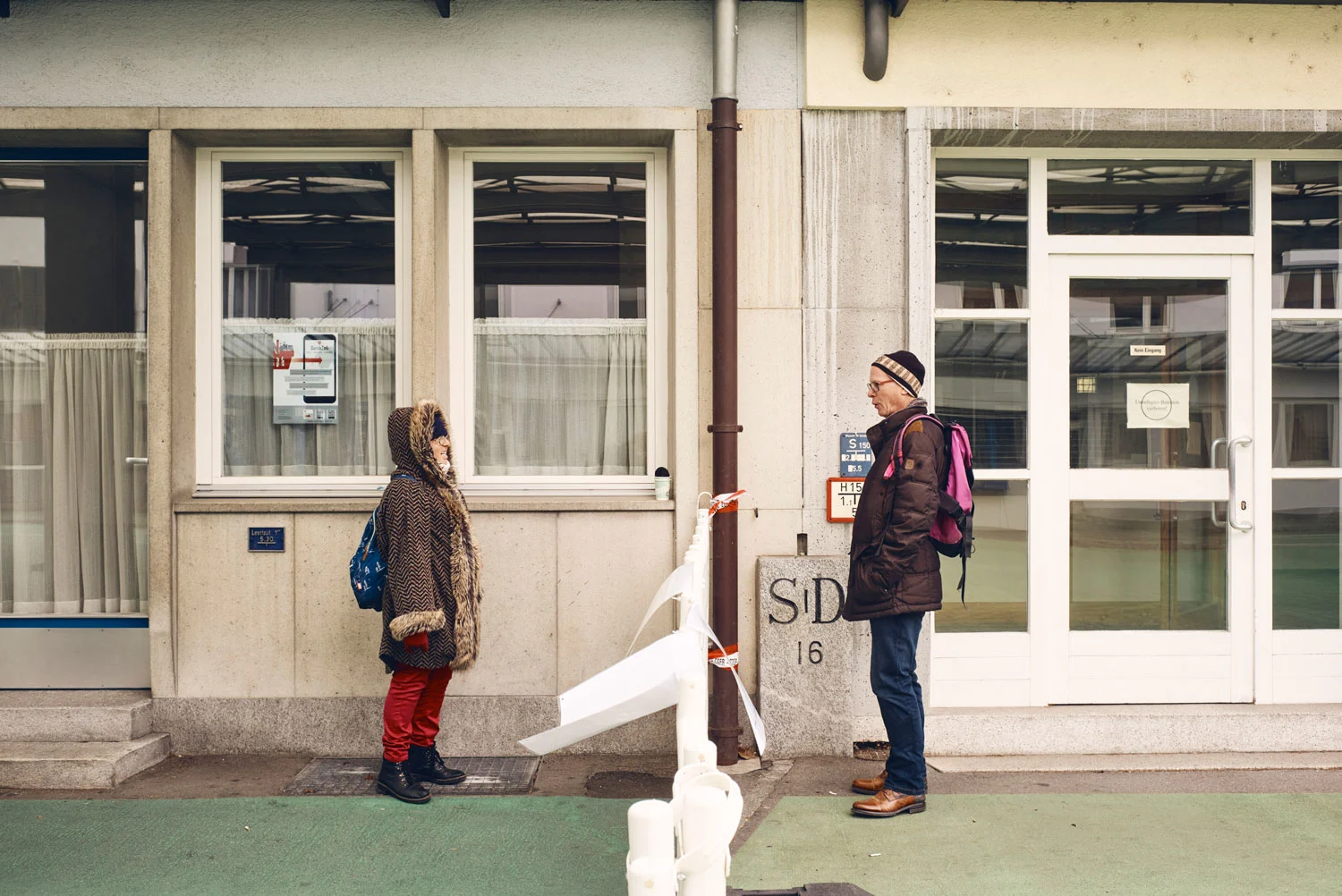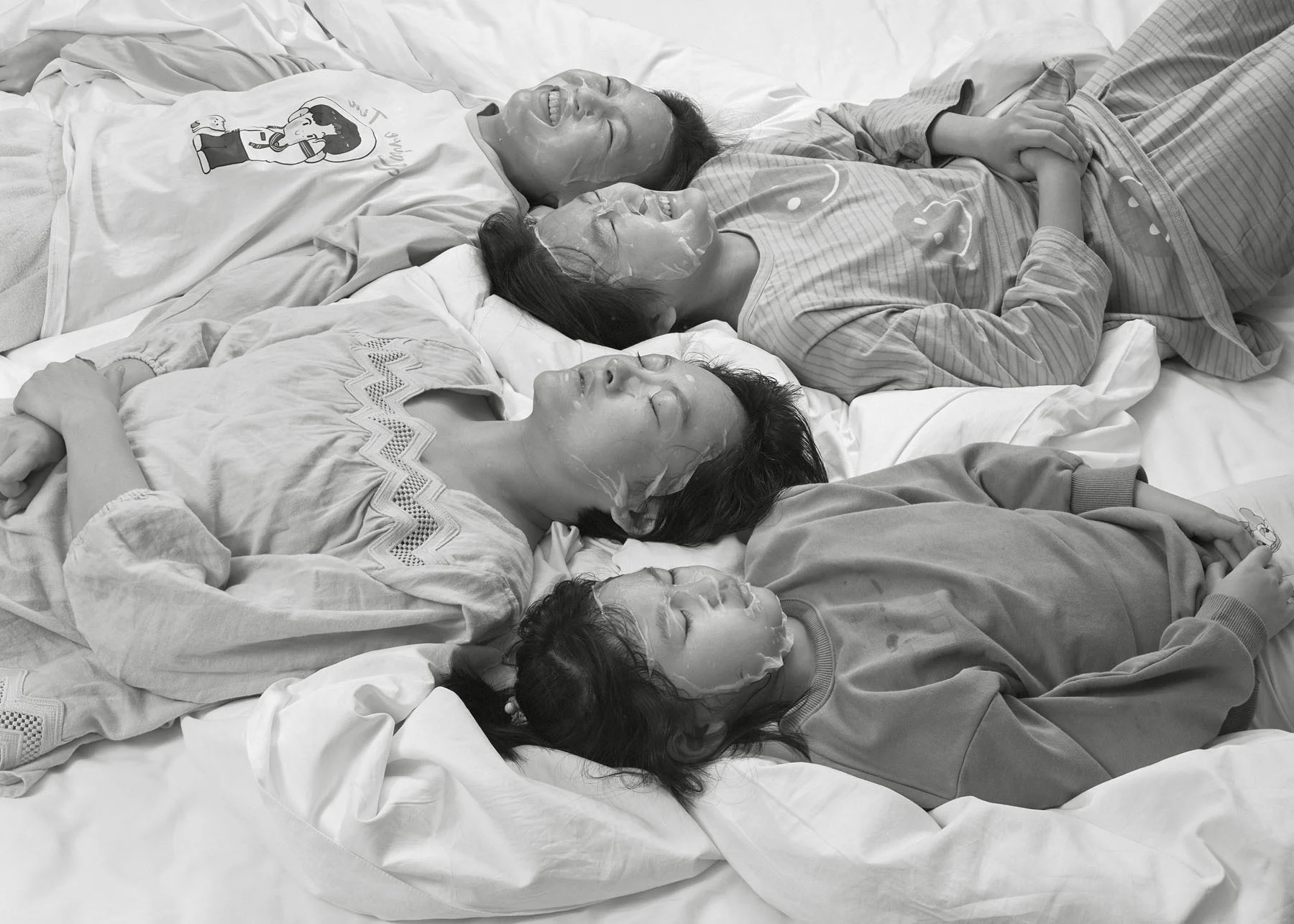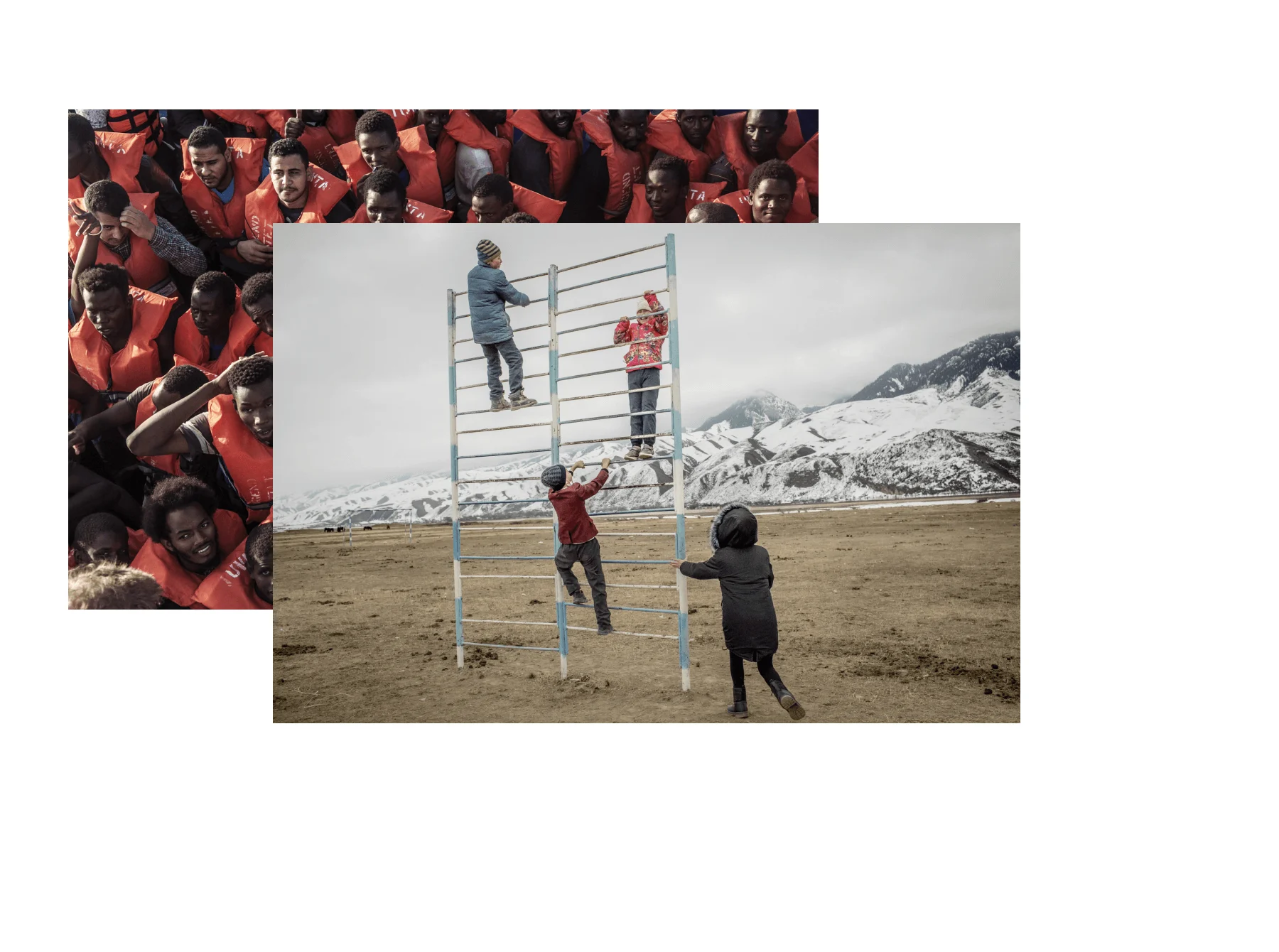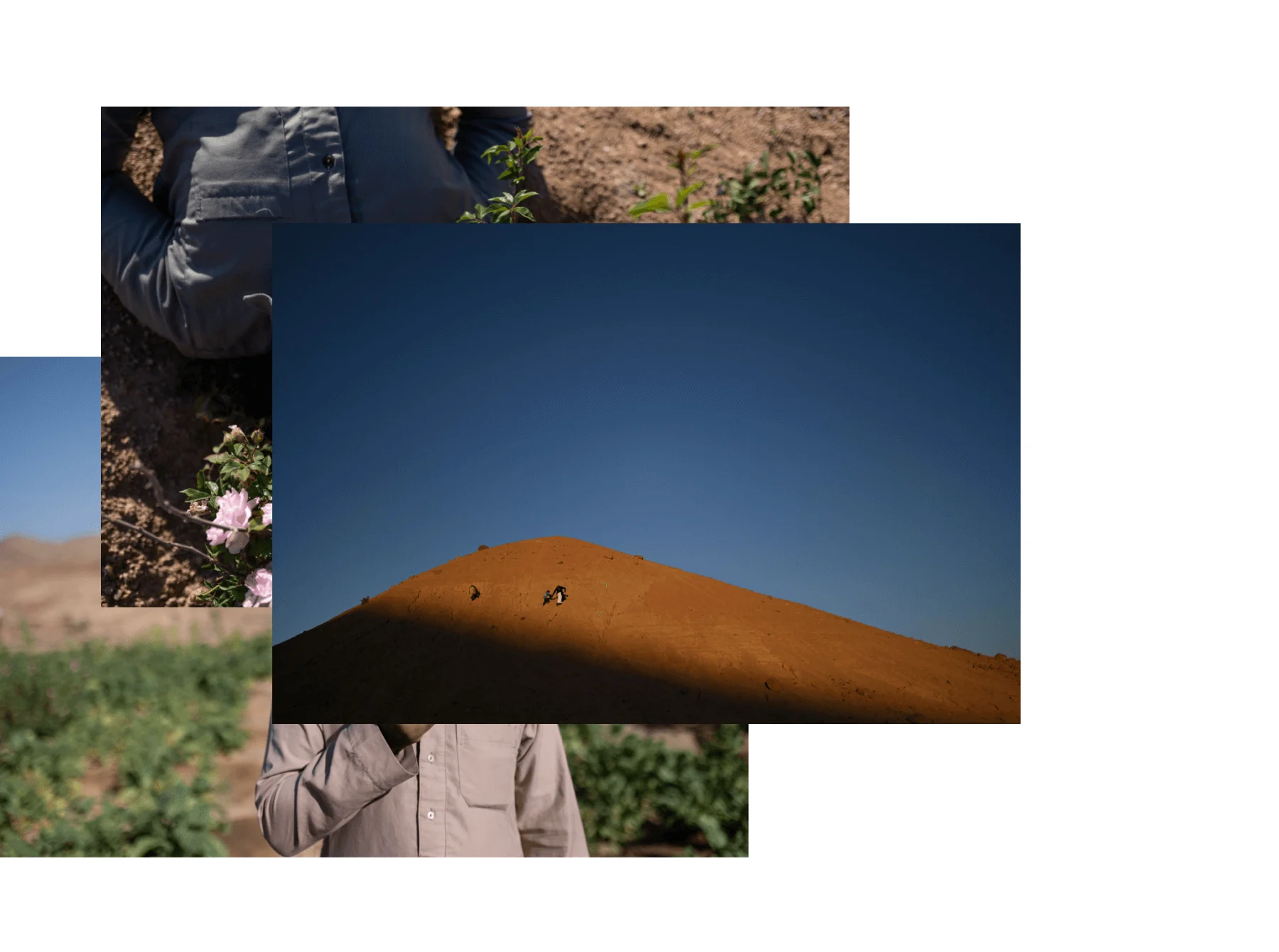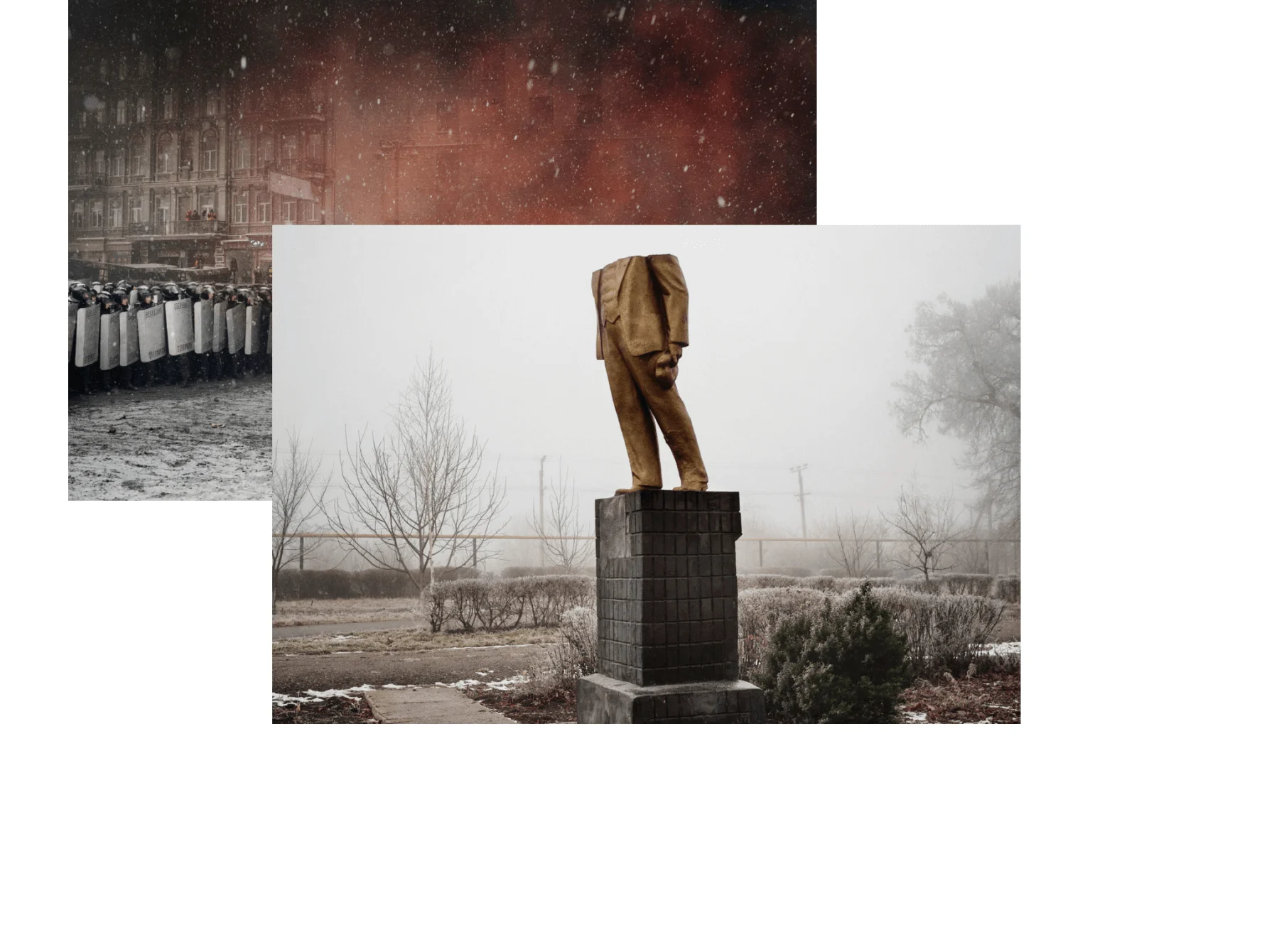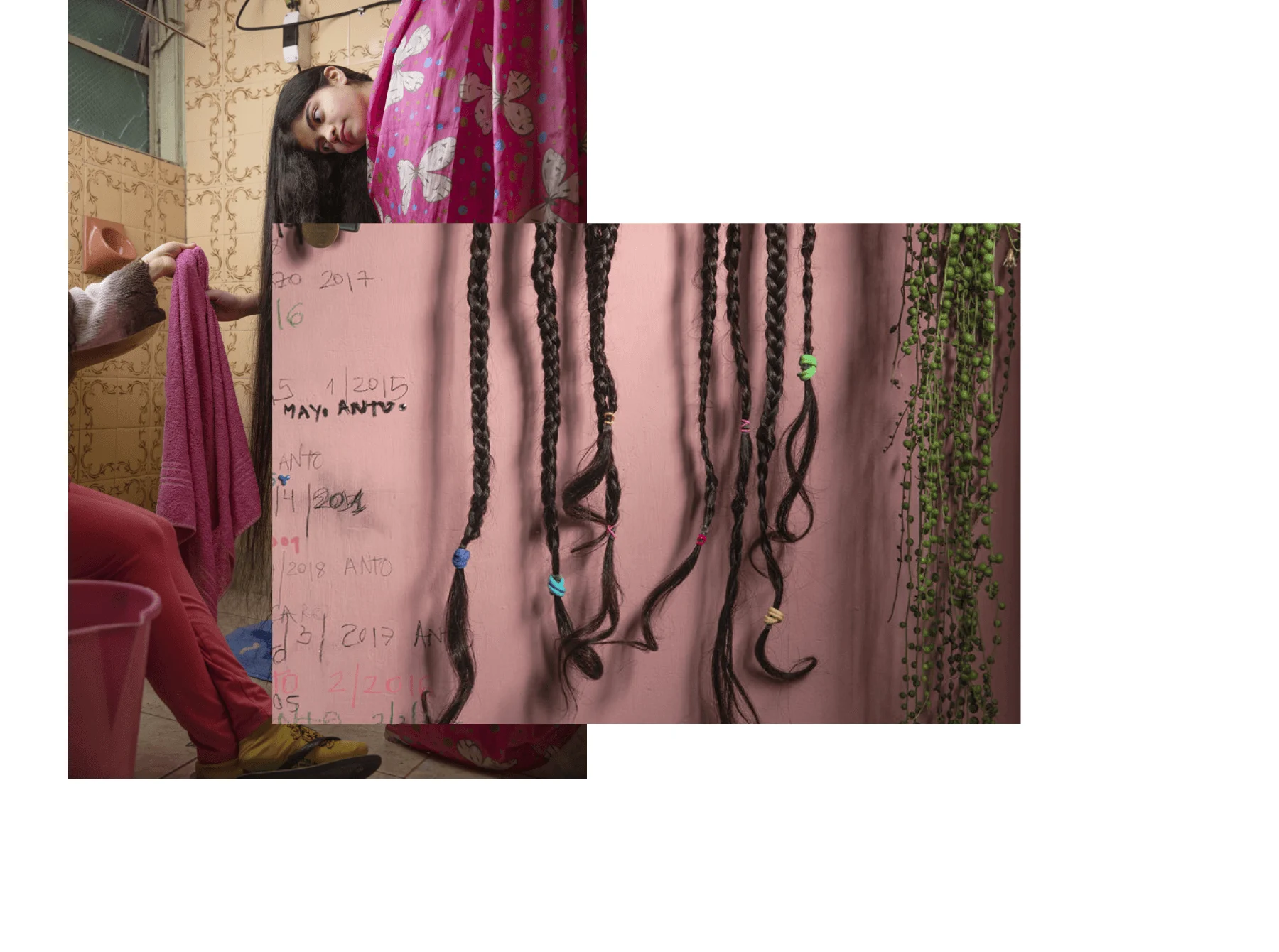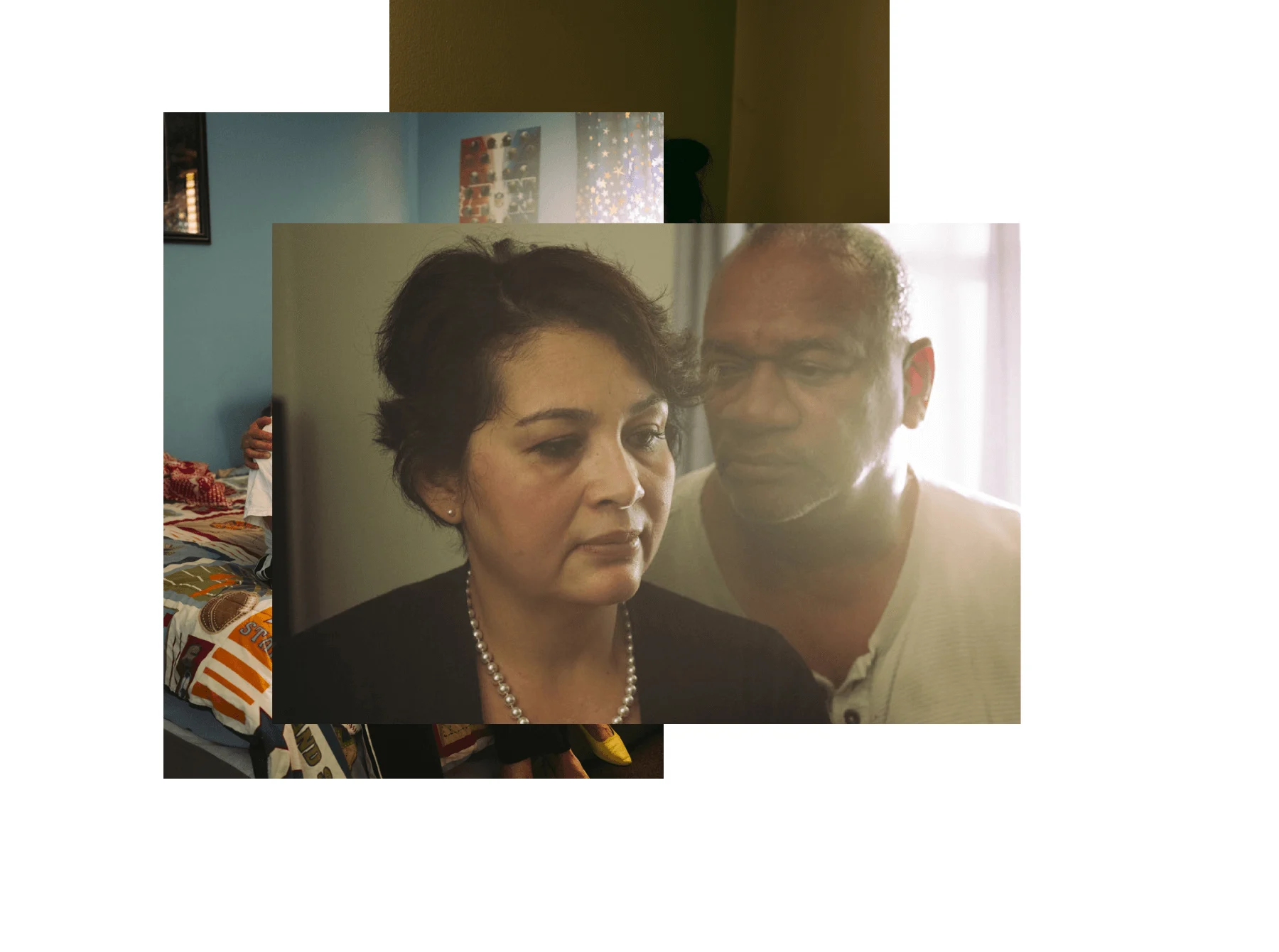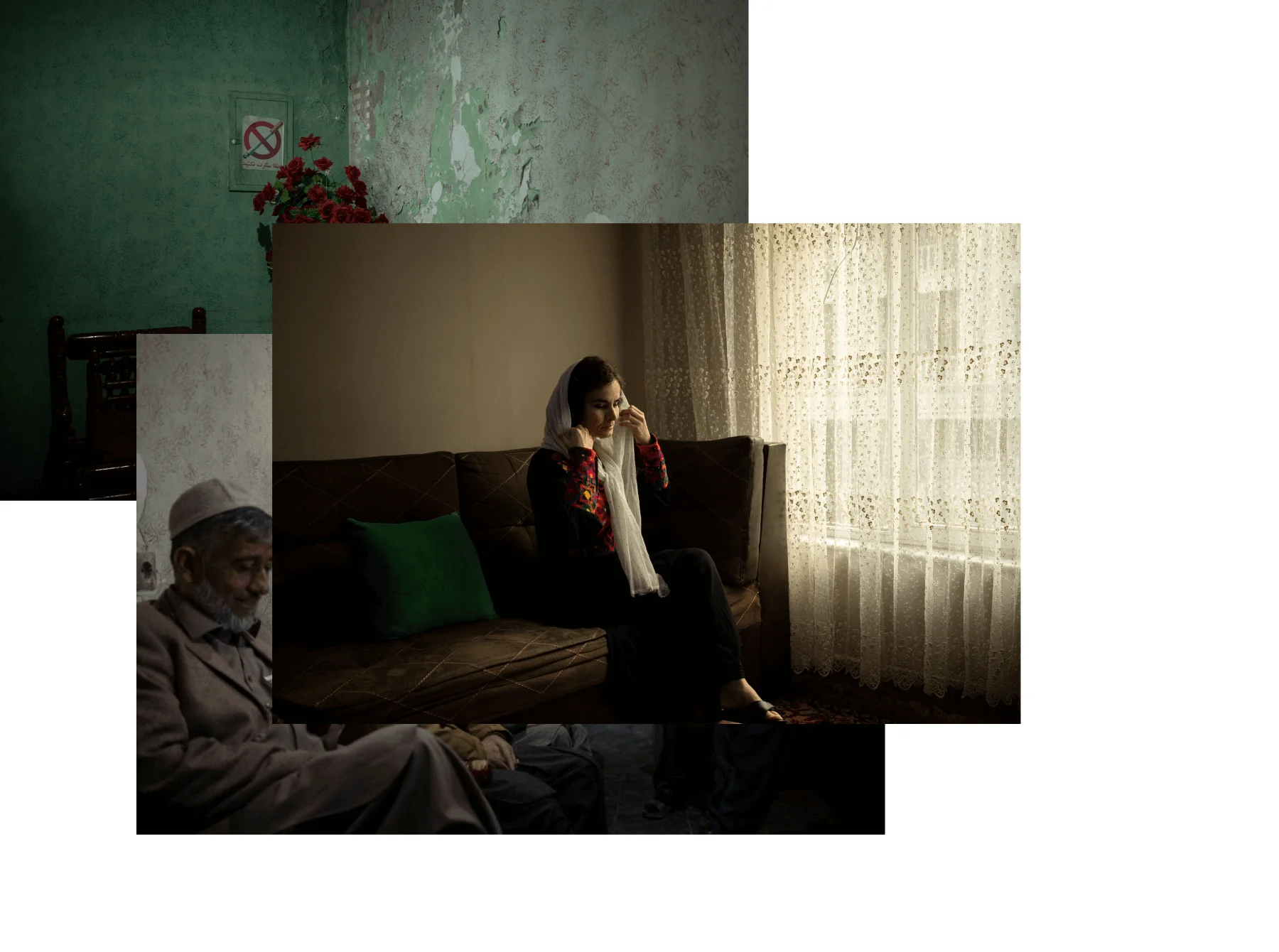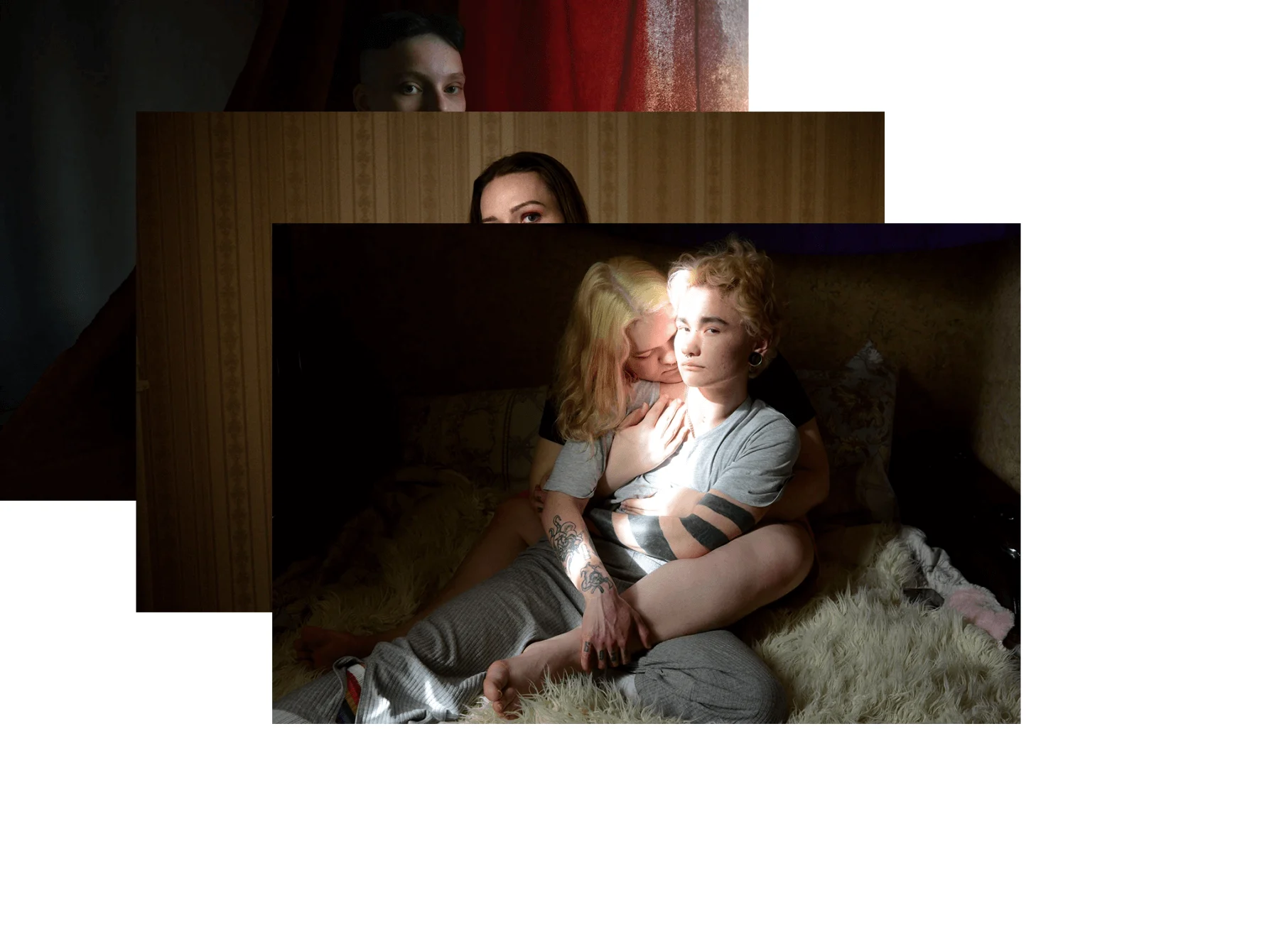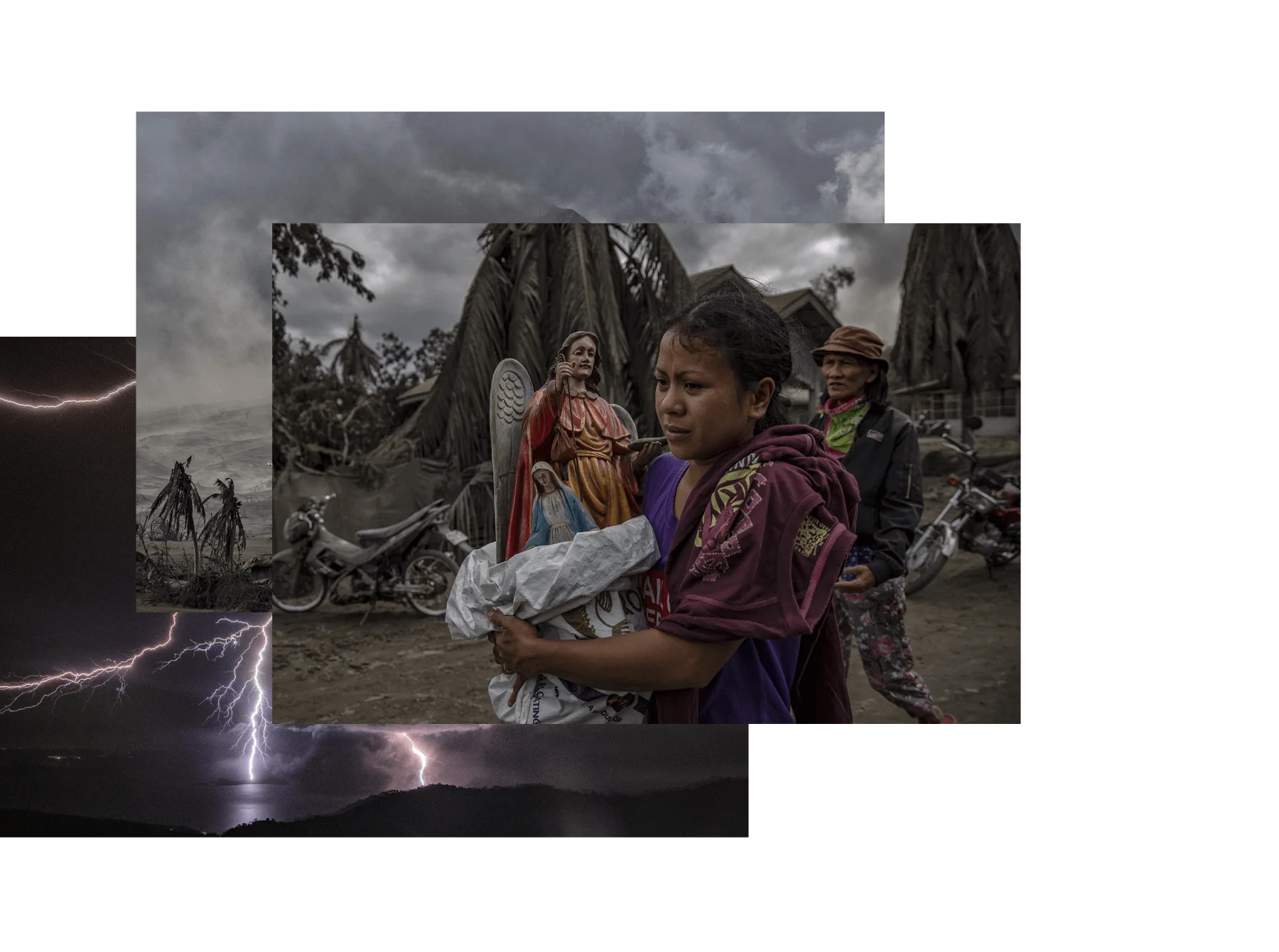
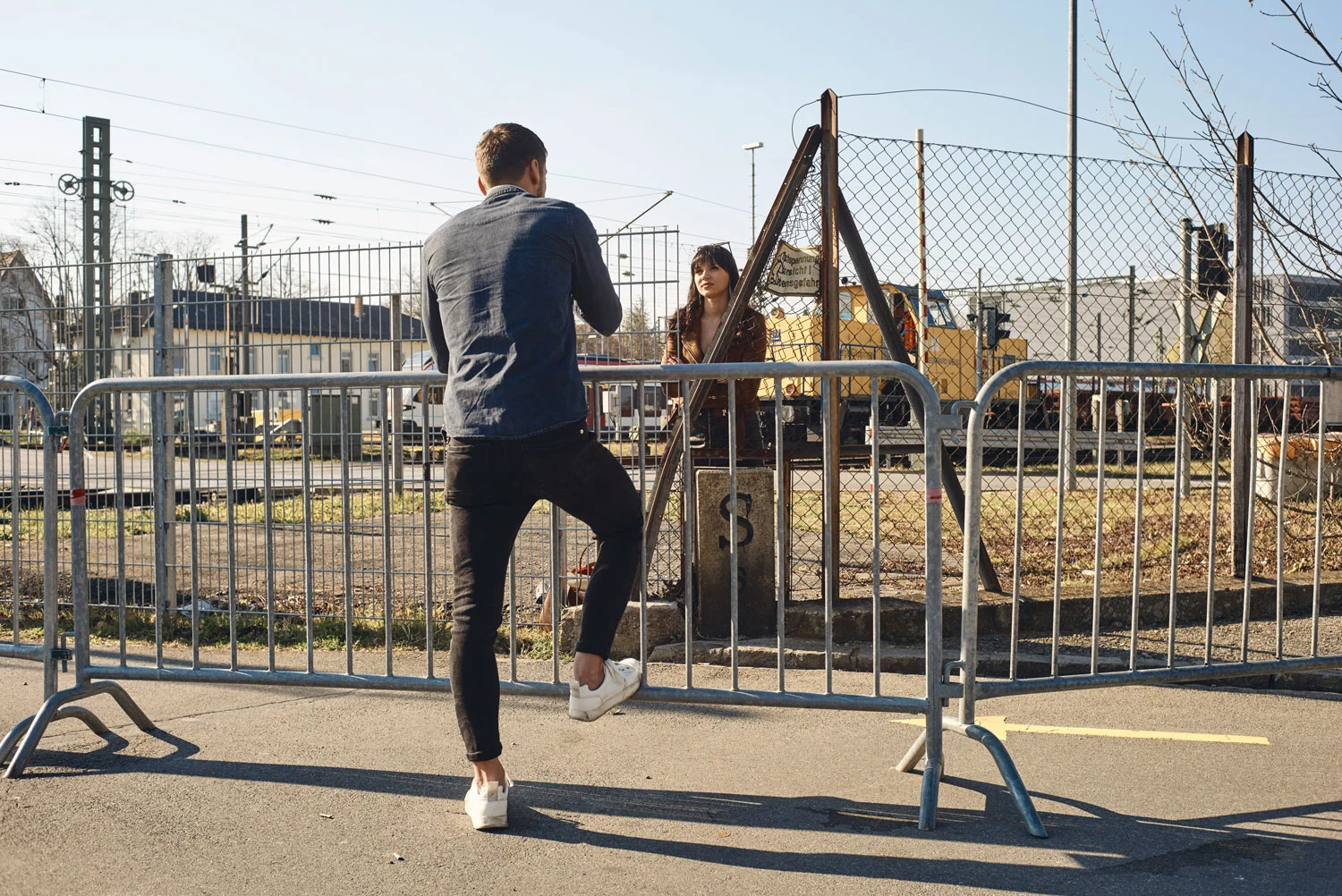
When the COVID-19 pandemic reached Europe, traveling between places suddenly became almost impossible. The border between Switzerland and Germany, normally completely open, was shut down abruptly, keeping people apart for months on end. For his series cross-border love, photographer Roland Schmid visited the border fences regularly, capturing friends coming together for picnics, and separated couples exchanging forbidden kisses under the watchful eye of the border guards.
Since 2016, we’ve partnered with the World Press Photo awards to tell the stories behind the best photojournalism around, in the photographers' own words. See the whole series here.
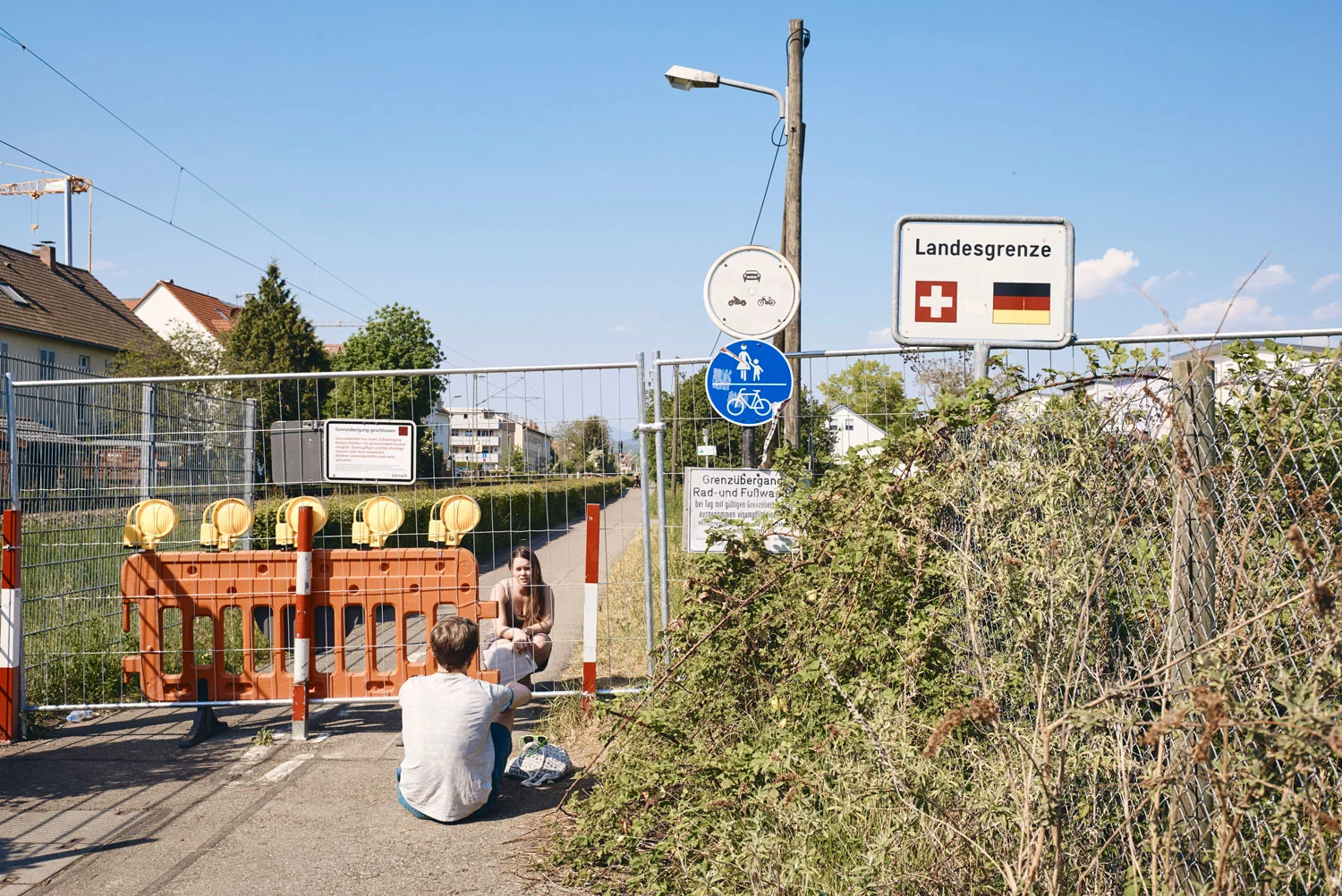
“Before COVID I was in Ukraine, covering the Donbass conflict. When I came back I couldn’t sell my story because the pandemic had taken hold. When the crisis reached Switzerland, I decided to try and find a way to cover it. I started out in the city, like most people did, taking photos of the empty streets and the closed shops. But then I heard that people were meeting at the border, friends or couples who had been separated, so I went to see it for myself and was really taken by it.
I live in Basel and that’s right on the border of both France and Germany. Some of the photos were taken in Riehen, a big village close to Basel, and others were taken at Lake Constance. The border is usually very open. The last time it was closed was during the Second World War, so it was strange to see. The tape and the fencing traced the same line that the barbed wire had done during the war, so you could imagine how it might have looked back then.

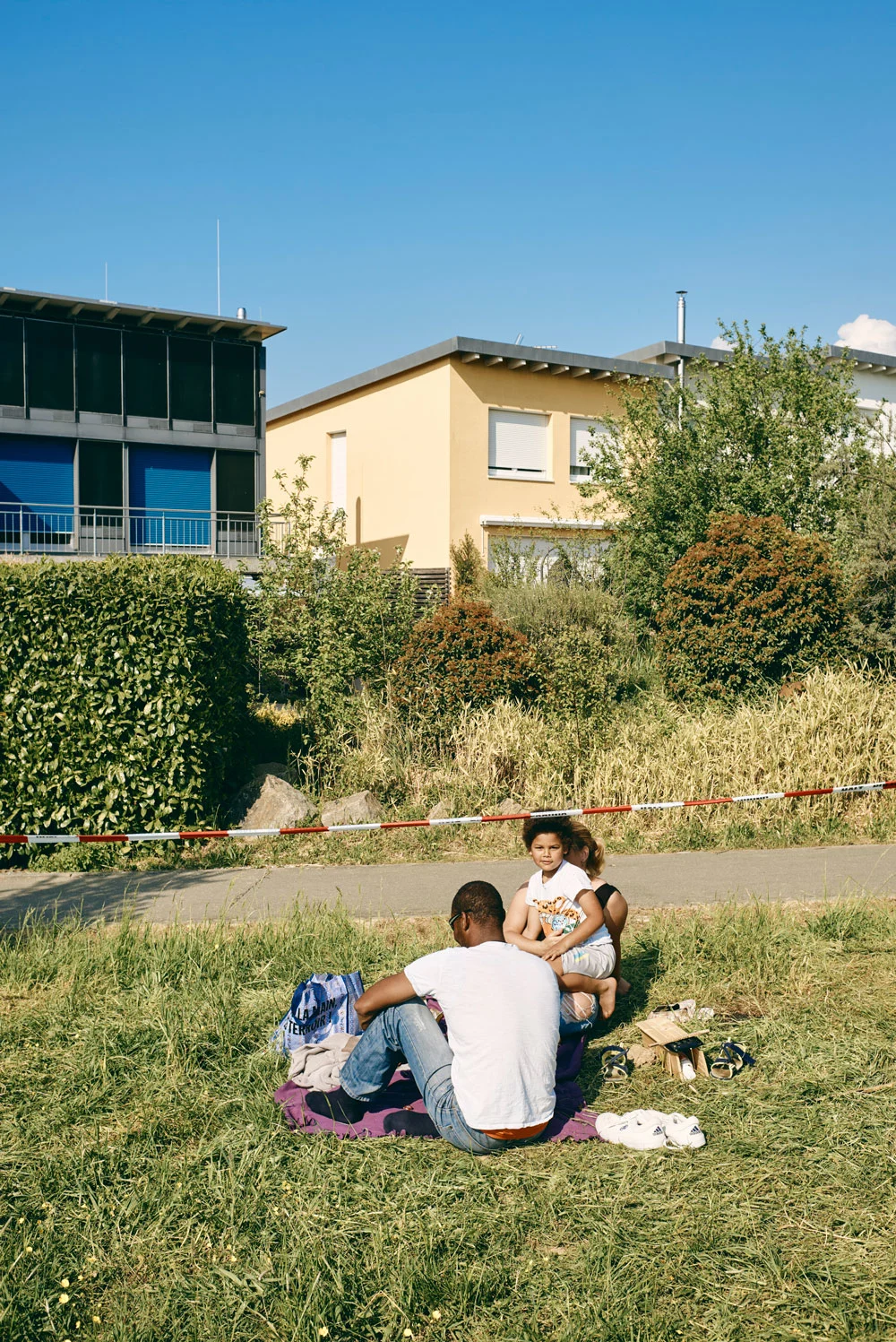
It’s difficult to take pictures in a place you know well because you’re not experiencing anything too alien.
I think the big difference between this project and my other work is that this crisis was in Europe. I was born here so I know this region very well. Usually it’s difficult to take pictures in a place you know well because you’re not experiencing anything too alien.
Things were happening, though, that suddenly made this place I know so well more exciting. The place didn’t have its usual boring cleanliness and routine. Switzerland is normally so overly organized, but there was so much improvization in the way these border fences were set up, and the way the people behaved was interesting.
I think you learn a lot about the way people behave in a crisis. You start to see all these anti-COVID movements. But imagine if a really big crisis comes along, like a war. What will happen to people? I don’t know. We’re so far inside our comfort zones here, and many people cannot step back from that. People also struggle to be on their own for a while. They always need some kind of entertainment to feel comfortable.
I spoke to most of the people I photographed there. Of course, they were quite pissed off with the situation. There was a woman who told me I had to photograph this because the world had to know about it. She lived close to Basel, and her friend had to travel for maybe four hours to get to the border and see his girlfriend. There were a lot of stories like this.
I thought it was quite a luxury problem to have, though, especially when you see what was going on in other parts of the world. It was obviously hard for these people, and a lot of them gave up on traveling so far to see one another and accepted being separated for a few months. Although it wasn’t a catastrophe, I thought it was worth documenting!
It was quite a unique situation, because people in Italy and Austria and France were under such strict curfews that they couldn’t even get to the border. In Germany and Switzerland, people were still quite free and had the possibility to meet each other, and that was pretty rare in Europe.
People kissed and held hands across the tape and the border guards would kindly turn a blind eye to it.
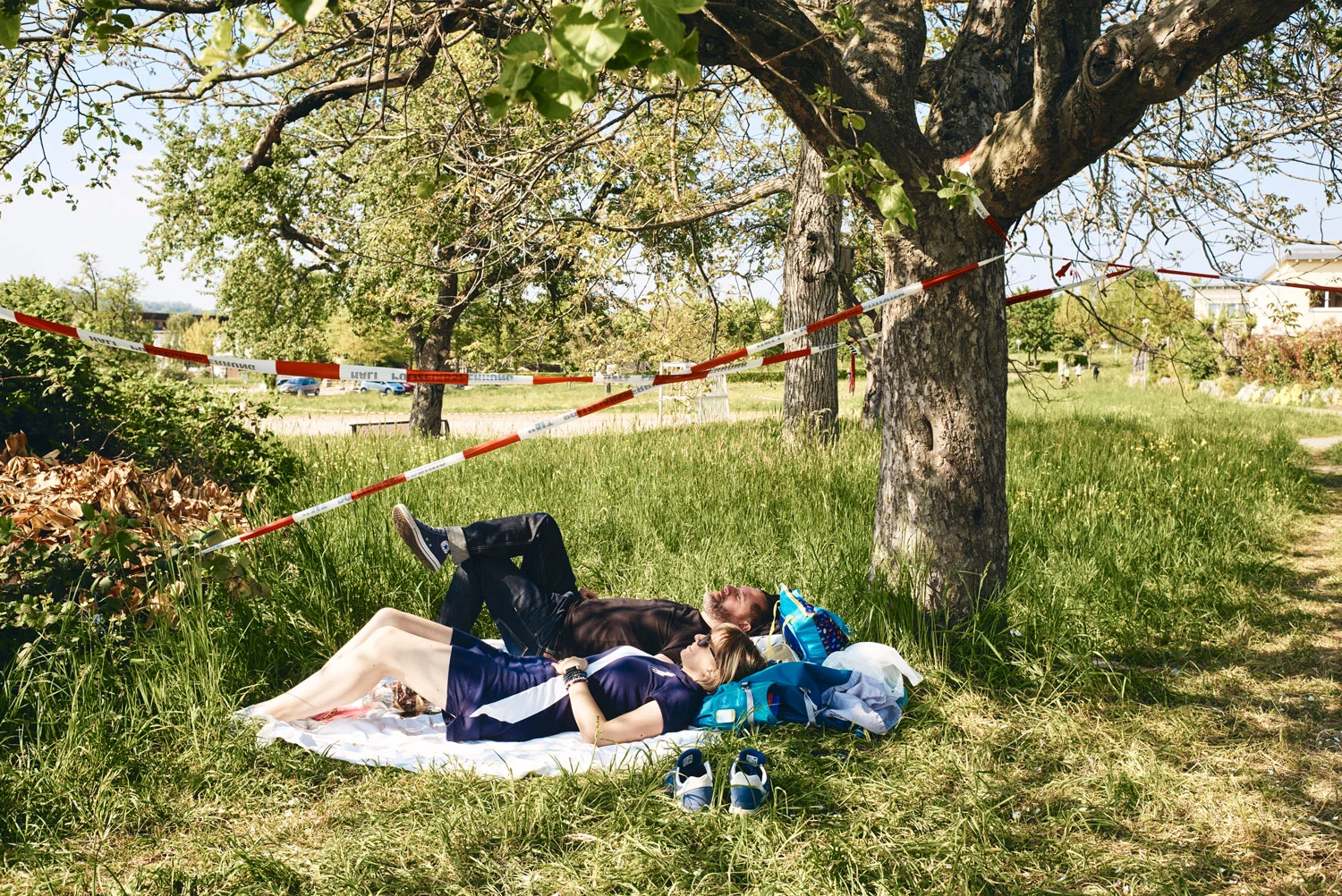
In one photo, two people are lying under the border tape, and there’s a very similar one where a couple lay under an apple tree. These people have just placed their blanket under the tape; one of them lying in Germany and the other in Switzerland. It’s actually such an absurd situation. It could be a scene in a Fellini film or something.
The entire image was the absolute opposite of what you would have seen in the hospitals at the time, and I found that really interesting. There was always such a friendly atmosphere at these border fences, because people were just happy to see each other. There was no aggression; everybody was really relaxed. People kissed and held hands across the tape and the border guards would kindly turn a blind eye to it.”





